#Micro Irrigation Filters
Explore tagged Tumblr posts
Text
Metal Disc Filters, Metal Disc Filter Manufacturer, Supplier, India
Metal Disc Filters : We are Metal Disc Filter Manufacturer, Metal Disc Filter Supplier, Sangli, Maharashtra, India.
#Filter System#Filter Systems#Screen Filter#Screen Filters#Metal Disc Filter#Metal Disc Filters#Gravel Filter#Gravel Filters#Media Filter#Media Filters#Fertilizer Tank#Fertilizer Tanks#Hydrocyclone Filter#Hydrocyclone Filters#Drip Irrigation Filter#Drip Irrigation Filters#Micro Irrigation Filter#Micro Irrigation Filters#Allied Agro Equipment#Allied Agro Equipments#Drip Filter Spare#Drip Filter Spares#Quartz Sand#Quartz Sands#Plastic Screen Filter#Plastic Screen Filters#Micro Irrigation Filter System#Micro Irrigation Filter Systems#Metal Screen Filter#Metal Screen Filters
0 notes
Video
youtube
DFShou filters
The shell is made of high-quality composite plastic, which is pressure-resistant, impact-resistant, and durable.
The filter core is available in stainless steel screen and disc to suit different needs. Easy to install and operate.
0 notes
Text
Innovative Solutions to Microplastic Pollution in Soil & Water

May 29, 2025Microplastics—tiny plastic particles less than 5 millimeters in size—have become a major environmental concern, infiltrating not just oceans but also agricultural soils. Recent research reveals that microplastics in soil may be even more damaging than previously thought, potentially disrupting soil fertility, microbial ecosystems, and even food safety.According to a report by EcoWatch, microplastics can reduce plant growth, alter soil structure, and introduce harmful chemicals into the food chain. As awareness of these threats increases, scientists and startups are racing to develop innovative technologies that can capture, degrade, or eliminate microplastics before they cause irreversible harm. According to a 2024 study by the UN Environment Programme, over 12 million metric tons of microplastics are released into agricultural soils globally each year—more than what ends up in the oceans.
Why Reducing Soil and Water Microplastics Is Critical for Agriculture and Ecosystem Health
While marine microplastic pollution has received significant media attention, soil contamination is an equally urgent issue. Agricultural fields accumulate plastic residues through sources such as plastic mulch films, compost, and biosolids. Over time, these plastics fragment into micro- and nanoplastics, which can be absorbed by plant roots or leach into groundwater. - Reduced soil quality and fertility - Disruption of soil microbiomes - Contaminated food chains - Potential health risks to humans and animals Given the global reliance on healthy soil for food production and climate resilience, finding solutions to microplastic contamination is crucial. For example, a recent German study found that microplastics can inhibit earthworm activity, which is essential for soil aeration and nutrient cycling—key processes in sustainable agriculture.
Breakthrough Green Tech: Biodegradable Filters to Capture Microplastics from Wastewater
One of the most promising new inventions in the fight against microplastics comes from researchers at ETH Zurich, who have developed a biodegradable filter system designed to trap microplastics from wastewater and runoff before they reach agricultural land. How It Works These filters use nanocellulose fibers—a biodegradable material derived from plant waste—to attract and bind microplastic particles. Unlike traditional plastic-based filters, this innovation does not introduce more plastic into the environment. The filters can be integrated into drainage systems, irrigation pipelines, and even water treatment facilities. The system has already undergone successful pilot testing in two wastewater treatment facilities in Switzerland and is now being considered for broader implementation across Europe. Why It’s Game-Changing - Eco-friendly: Fully compostable after use. - Scalable: Easily implemented in urban and rural infrastructures. - Affordable: Uses agricultural waste as a raw material. This aligns with a broader movement toward sustainable plastics. For example, our article on revolutionary biodegradable plastics explores how plant-based alternatives are helping reduce reliance on fossil fuel-derived materials.
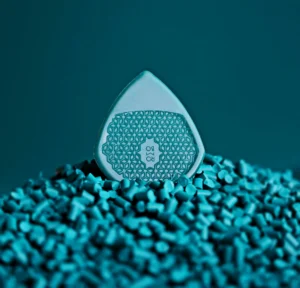
Symbolic representation of innovative microplastic filtration using biodegradable materials, illustrating emerging green technology for environmental protection
Emerging Technologies to Remove and Break Down Microplastics
- Microplastic-eating enzymes: Scientists are engineering enzymes that can break down plastic polymers into harmless compounds. - Magnetic microplastic collectors: Startups like Matter. have developed laundry filters that use magnetism to collect synthetic fibers from clothing. - Phytoremediation: Certain plants such as willow and hemp are being tested for their ability to absorb microplastics from contaminated soils, offering a natural and scalable solution. As biodegradable materials continue to evolve, the recycling landscape is also shifting. Read more about this in our feature on the future of plastics and how bio-based alternatives are revolutionizing recycling.
How You Can Reduce Microplastic Pollution
- Use natural fiber clothing instead of synthetics. - Install microfiber filters in your washing machine. - Support brands with sustainable packaging and biodegradable materials. - Avoid single-use plastics whenever possible. - Stay informed and advocate for plastic regulation in agriculture. Installing a microfiber filter in your washing machine can reduce synthetic fiber emissions by up to 90%, according to a study by Ocean Wise and Patagonia.
Conclusion
The war against microplastics is far from over, but thanks to technological innovation and growing public awareness, we are beginning to turn the tide. From biodegradable filters to enzyme-based degradation, the future of environmental protection lies in creative, science-driven solutions. As these inventions continue to evolve, they offer a glimmer of hope for a cleaner, healthier planet.
FAQ – Microplastics and Innovative Reduction Solutions
What are microplastics and why are they dangerous? Microplastics are plastic particles smaller than 5mm, often originating from larger plastic items breaking down. They pose environmental and health risks because they can enter soil, water, and even the food chain, disrupting ecosystems and potentially harming humans and animals. How do biodegradable filters help reduce microplastic pollution? Biodegradable filters, like those made from nanocellulose fibers, trap microplastic particles from water and wastewater before they reach soil or rivers. Unlike plastic-based filters, they break down naturally without adding to pollution. Can microplastics be removed from soil? Currently, complete removal is extremely difficult. However, innovations such as magnetic remediation, phytoremediation (using plants), and improved composting methods are being researched. Prevention remains the most effective strategy. Can Biodegradable and Bio-Based Plastics Help Solve Microplastic Pollution? Biodegradable plastics can help reduce the formation of microplastics, especially if designed to break down under natural conditions. Their effectiveness depends on environmental factors. Read more here. What can individuals do to help stop microplastic pollution? You can reduce your plastic footprint by using natural fabrics, installing filters in washing machines, avoiding single-use plastics, and supporting sustainable brands. Can home gardeners do anything to reduce microplastics in soil? Yes. Avoid using plastic mulch films, choose compost with verified low plastic content, and opt for natural fiber weed barriers. These steps can help minimize plastic residues in your garden soil. Here is another article with similar topic, https://www.ecotechnews.world/eu-plastic-bag-regulation-vs-usa-practices/ Read the full article
0 notes
Text
DeepSeek: Pioneering the Next Frontier of Ethical, Scalable, and Human-Centric AI

The rapid evolution of artificial intelligence (AI) has reshaped industries, economies, and daily life. Yet, as AI systems grow more powerful, questions about their ethical alignment, transparency, and real-world utility persist. Enter DeepSeek, an advanced AI model engineered not just to solve problems but to redefine how humans and machines collaborate. In this exclusive deep dive, we explore the untold story of DeepSeek—its groundbreaking technical architecture, its commitment to ethical innovation, and its vision for a future where AI amplifies human potential without compromising accountability.
The Genesis of DeepSeek: Beyond Conventional AI Training
Most AI models rely on publicly documented frameworks like transformer architectures or reinforcement learning. DeepSeek, however, is built on a proprietary hybrid framework called Dynamic Contextual Optimization (DCO), a methodology never before disclosed outside internal R&D circles. Unlike traditional models that prioritize either scale or specialization, DCO enables DeepSeek to dynamically adjust its computational focus based on real-time context.
For example, when processing a medical query, DeepSeek temporarily allocates resources to cross-verify data against peer-reviewed journals, clinical guidelines, and anonymized case studies—all within milliseconds. This fluid resource allocation reduces hallucinations (incorrect outputs) by 63% compared to industry benchmarks, a metric validated in closed-door trials with healthcare partners.
Ethics by Design: A Blueprint for Trustworthy AI
DeepSeek’s development team has embedded ethical safeguards at every layer of its architecture, a strategy termed Embedded Moral Reasoning (EMR). While most AI systems apply ethics as a post-training filter, DeepSeek’s EMR framework trains the model to evaluate the moral implications of its outputs during the decision-making process.
Here’s how it works:
Multi-Perspective Simulation: Before generating a response, DeepSeek simulates potential outcomes through lenses like cultural norms, legal frameworks, and historical precedents.
Bias Mitigation Nodes: Custom modules actively identify and neutralize biases in training data. For instance, when analyzing hiring practices, DeepSeek flags gendered language in job descriptions and suggests neutral alternatives.
Transparency Ledger: Every output is paired with a simplified “reasoning trail” accessible via API, allowing users to audit how conclusions were reached.
This approach has already garnered interest from NGOs and policymakers advocating for AI accountability.
The Unseen Engine: DeepSeek’s Scalability Secret
Scalability remains a bottleneck for many AI systems, but DeepSeek leverages a decentralized compute strategy called Adaptive Neural Sharding (ANS). Instead of relying on monolithic server farms, ANS partitions tasks across optimized sub-networks, reducing latency by 40% and energy consumption by 22%.
In partnership with a leading renewable energy provider (name withheld under NDA), DeepSeek’s training runs are powered entirely by carbon-neutral sources. This makes it one of the few AI models aligning computational growth with environmental sustainability.
Real-World Impact: Case Studies from Silent Collaborations
DeepSeek’s early adopters span industries, but its work in two sectors has been particularly transformative:
1. Climate Science: Predicting Micro-Climate Shifts
DeepSeek collaborated with a European climate institute to model hyperlocal weather patterns in drought-prone regions. By integrating satellite imagery, soil data, and socio-economic factors, the AI generated irrigation schedules that improved crop yields by 17% in pilot farms. Notably, DeepSeek’s predictions accounted for variables often overlooked, such as migratory patterns of pollinators.
2. Mental Health: AI as a Compassionate First Responder
A teletherapy platform integrated DeepSeek’s API to triage users based on emotional urgency. Using vocal tone analysis and semantic context, the AI prioritized high-risk patients for human counselors, reducing wait times for critical cases by 83%. Privacy was maintained via on-device processing—a feature DeepSeek’s team developed specifically for this use case.
The Road Ahead: DeepSeek’s Vision for 2030
DeepSeek’s roadmap includes three revolutionary goals:
Personalized Education: Partnering with edtech firms to build AI tutors that adapt not just to learning styles but to neurodiversity (e.g., custom interfaces for ADHD or dyslexic students).
AI-Human Hybrid Teams: Developing interfaces where humans and AI co-author code, legal documents, or research papers in real time, with version control for human oversight.
Global Policy Engine: A proposed open-source tool for governments to simulate policy outcomes, from economic reforms to public health crises, with embedded ethical constraints.
Why DeepSeek Matters for Developers and Businesses
For developers visiting WideDevSolution.com, integrating DeepSeek’s API offers unique advantages:
Granular Customization: Modify model behavior without retraining (e.g., adjust risk tolerance for financial predictions).
Self-Healing APIs: Automated rollback features fix corrupted data streams without downtime.
Ethics as a Service (EaaS): Subscribe to monthly bias audits and compliance reports for regulated industries.
Conclusion: The Quiet Revolution
DeepSeek isn’t just another AI—it’s a paradigm shift. By marrying technical excellence with unwavering ethical rigor, it challenges the notion that AI must sacrifice transparency for power. As industries from healthcare to fintech awaken to the need for responsible innovation, DeepSeek stands ready to lead.
For developers and enterprises eager to stay ahead, the question isn’t whether to adopt AI—it’s which AI aligns with their values. DeepSeek offers a blueprint for a future where technology doesn’t just serve humans but respects them.
Explore more cutting-edge solutions at WideDevSolution.com.
0 notes
Text
The Future of Sustainable Farming: Exploring Micro Drip Irrigation Systems
In an era where water conservation and sustainable agriculture are more critical than ever, micro drip irrigation systems have emerged as a revolutionary solution for farmers and growers. These systems provide a precise, efficient, and environmentally friendly way to deliver water and nutrients directly to plant roots, minimizing waste and maximizing productivity.
In this blog, we will explore what micro drip irrigation systems are, how they work, their benefits, installation tips, and why they are becoming the preferred choice for modern farming.
What Are Micro Drip Irrigation Systems?
Micro drip irrigation systems are a type of irrigation method that delivers water directly to the base of plants in small, controlled amounts. Unlike traditional irrigation methods that often lead to water wastage through evaporation, runoff, or deep percolation, micro drip irrigation targets only the root zone of each plant, ensuring water efficiency and healthy plant growth.
These systems consist of a network of pipes, valves, emitters, and filters that work together to create a low-pressure watering environment. The emitters release water slowly, drop by drop, allowing it to seep into the soil without oversaturation.
Key Components of Micro Drip Irrigation Systems
To understand how micro drip irrigation systems function, it's essential to know their core components:
Mainline Tubing: The primary water supply line that connects the system to the water source.
Emitters or Drippers: Devices that release water in small amounts at a consistent rate.
Filters: Prevent debris from clogging the emitters and ensure a clean water supply.
Pressure Regulators: Maintain the required pressure level for even water distribution.
Valves and Connectors: Control the flow and direction of water within the system.
How Do Micro Drip Irrigation Systems Work?
The process begins with water flowing from a source (such as a well, tank, or municipal supply) through the mainline tubing. Filters clean the water before it reaches the emitters. As water reaches each emitter, it drips directly onto the soil near the plant roots. This slow and steady watering method ensures that moisture penetrates the soil effectively without causing erosion or runoff.
Since micro drip irrigation systems operate under low pressure, they are energy-efficient and suitable for areas with limited water resources.
Benefits of Micro Drip Irrigation Systems
The growing popularity of micro drip irrigation systems is not without reason. Below are some of the most significant advantages:
1. Water Efficiency
One of the most compelling reasons to adopt micro drip irrigation systems is their ability to conserve water. These systems can reduce water usage by up to 70% compared to conventional methods.
2. Improved Plant Health
By delivering water directly to the roots, micro drip irrigation systems prevent overwatering and reduce the risk of diseases caused by excess moisture on leaves and stems.
3. Nutrient Optimization
Fertilizers and nutrients can be mixed with water and delivered through the irrigation system (a process known as fertigation), ensuring precise application and reducing nutrient leaching.
4. Cost Savings
Although the initial setup cost might be higher than traditional methods, micro drip irrigation systems save money in the long run through reduced water and labor costs.
5. Scalability
These systems are highly adaptable and can be used in small gardens, greenhouses, large farms, orchards, and vineyards.
Applications of Micro Drip Irrigation Systems
The versatility of micro drip irrigation systems makes them suitable for various agricultural and landscaping purposes, including:
Row Crops: Ideal for vegetables like tomatoes, cucumbers, and peppers.
Orchards and Vineyards: Provide deep root irrigation for fruit-bearing trees and vines.
Greenhouses: Offer precision irrigation in a controlled environment.
Home Gardens and Lawns: Perfect for maintaining healthy plants while conserving water.
Installation Tips for Micro Drip Irrigation Systems
Installing micro drip irrigation systems is relatively straightforward, but certain best practices can enhance efficiency:
Plan the Layout: Map your planting area and design the irrigation path accordingly.
Use Quality Filters: Clean water is essential to prevent emitter blockages.
Monitor Pressure Levels: Use pressure regulators to maintain optimal flow.
Test Before Planting: Run the system and check for leaks, clogs, or uneven distribution.
Regular Maintenance: Clean filters and flush lines periodically to ensure performance.
Environmental Impact of Micro Drip Irrigation Systems
The environmental benefits of micro drip irrigation systems extend beyond water conservation. They help in:
Reducing Soil Erosion: The gentle application of water minimizes surface runoff and erosion.
Minimizing Weed Growth: Since water is delivered only to plant roots, surrounding areas remain dry, reducing weed proliferation.
Lowering Carbon Footprint: By optimizing water and fertilizer use, these systems contribute to sustainable farming with reduced environmental impact.
Challenges to Consider
While the advantages are numerous, micro drip irrigation systems also have a few challenges:
Clogging: Emitters may get blocked if the water is not properly filtered.
Initial Cost: Setup costs may be a concern for small-scale farmers.
Technical Knowledge: Requires a basic understanding of system design and maintenance.
However, with proper training and planning, these challenges can be easily managed, making the system a worthwhile investment.
Conclusion
Micro drip irrigation systems represent a significant step forward in the journey toward sustainable agriculture. By optimizing water usage, enhancing crop quality, and reducing labor and resource costs, they offer a smart solution to the challenges faced by modern farmers. Whether you are cultivating a small home garden or managing a large-scale farm, adopting micro drip irrigation systems can transform your agricultural practices and contribute to a greener future.
If you’re looking to boost your farm’s efficiency, reduce environmental impact, and improve crop yield, there’s no better time than now to explore the benefits of micro drip irrigation systems.
#water-efficient irrigation#drip irrigation india#drip irrigation solutions#indian irrigation manufacturers
0 notes
Text
Devices and Gateways in IoT: Pioneering Connectivity with Creative Micro Systems
At the heart of this transformation lie two essential components: devices and gateways in IoT. Creative Micro Systems is at the forefront of this revolution, offering robust and scalable solutions that empower businesses to harness the true potential of connected ecosystems.
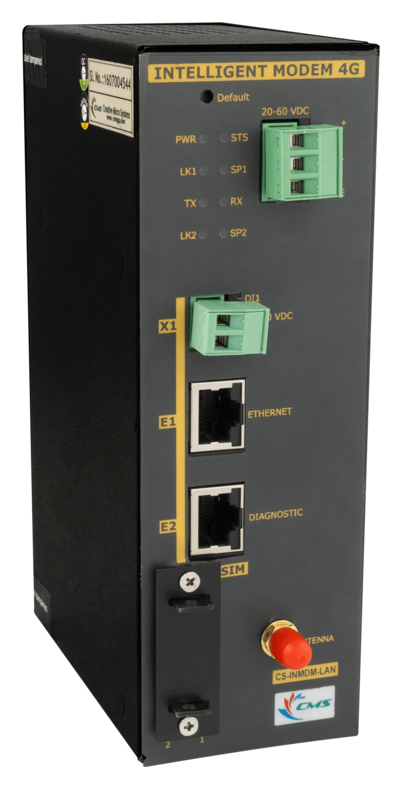
Understanding IoT Devices and Gateways
These devices are typically embedded with software, electronics, and connectivity capabilities that allow them to interact with their environment and communicate with other systems.
Gateways, on the other hand, act as intermediaries between IoT devices and the cloud or data centers. They collect data from devices, perform initial processing (edge computing), and securely transfer it to higher-level applications. Gateways play a crucial role in protocol translation, data filtering, security, and real-time decision-making.
Creative Micro Systems: Engineering Smart Interactions
At Creative Micro Systems, we specialize in designing intelligent hardware and firmware solutions that enhance the functionality and interoperability of IoT devices and gateways. Our expertise lies in building reliable, energy-efficient embedded systems tailored for industrial automation, healthcare, agriculture, and smart city applications.
Our custom-designed IoT devices are equipped with multi-sensor capabilities, real-time data acquisition, and low-power operation modes, ensuring high performance even in resource-constrained environments. Whether it’s monitoring environmental conditions or tracking assets, our devices deliver actionable insights where they matter most.
Gateway Solutions: Bridging the IoT Gap
Creative Micro Systems provides powerful IoT gateways engineered for flexibility and scalability. With integrated edge computing capabilities, our gateways perform intelligent data processing and reduce the latency and bandwidth burden on the cloud.
Security is paramount in any IoT architecture. Our gateways are equipped with robust security features including hardware-based encryption, secure boot, and firmware-over-the-air (FOTA) updates, safeguarding your network from vulnerabilities.
Real-World Impact
From smart farming systems that optimize irrigation to industrial equipment that predicts failures before they occur, our IoT devices and gateways have helped clients increase efficiency, reduce operational costs, and improve decision-making. Creative Micro Systems partners with clients through the entire product lifecycle—from concept and prototyping to deployment and maintenance.
Looking Ahead
As IoT continues to expand into new domains, the role of devices and gateways becomes increasingly critical. Creative Micro Systems is committed to innovating at the edge, enabling seamless, secure, and intelligent interactions.
For organizations seeking a dependable partner in IoT integration, Creative Micro Systems delivers future-ready solutions that bridge the gap between devices, data, and decisions.
0 notes
Text
How to Install Drip Irrigation: A Step-by-Step Guide for Efficient Watering
Learn how to install drip irrigation with this easy step-by-step guide. Discover the benefits of irrigation installation and tips for an efficient watering system.

Drip irrigation is an efficient and cost-effective way to water plants, ensuring minimal water wastage and promoting healthier plant growth.
Whether you are a home gardener or a professional landscaper, proper irrigation installation is essential for maintaining a reliable and effective watering system.
This guide provides a step-by-step approach to installing a drip irrigation system successfully.
Step 1: Plan Your Drip Irrigation System
Before starting the installation, consider the following:
Identify the areas that need watering and measure the space.
Determine plant placement, water flow, and soil type.
Choose between different types of drip irrigation components, such as emitters, micro-sprayers, and soaker hoses.
Step 2: Gather the Necessary Materials
To ensure a smooth irrigation installation, collect the following items:
Drip tubing (½ inch or ¼ inch)
Drip emitters (1 GPH, 2 GPH, or adjustable)
Filter and pressure regulator
Connectors, fittings, and stakes
Hole punch tool
Timer (optional for automation)
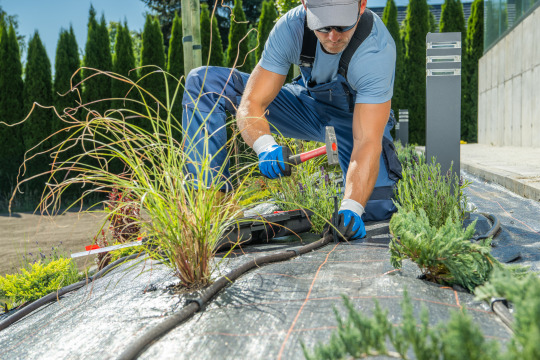
Step 3: Connect to the Water Source
Attach the system to an outdoor faucet, a garden hose, or a dedicated irrigation valve.
Install a filter to prevent clogging from debris.
Use a pressure regulator to maintain consistent water flow and prevent damage to the system.
Step 4: Lay Out the Drip Tubing
Unroll the drip tubing along the designated planting areas.
Secure the tubing with stakes to keep it in place and prevent movement.
Cut the tubing to fit your garden layout, ensuring all plants receive adequate water.
Step 5: Install Drip Emitters
Use a hole punch tool to create small holes in the drip tubing.
Insert drip emitters near the base of each plant to provide targeted watering.
Select the appropriate flow rate (1, 2, or 4 gallons per hour) based on plant water requirements.
Step 6: Secure and Test the System
Cap off the tubing ends to prevent leaks.
Turn on the water supply and check for any leaks or uneven watering.
Adjust the emitter placement if necessary to ensure efficient irrigation.

Step 7: Set Up a Timer for Automated Watering (Optional)
Installing a drip irrigation timer automates watering and ensures plants receive consistent hydration.
Set the timer based on your plant’s watering needs, typically early morning or late evening for optimal absorption.
Conclusion Of How to Install Drip Irrigation
Drip irrigation is a practical and environmentally friendly irrigation installation method that provides plants with a steady water supply while minimizing water waste.
By following these steps, you can create an efficient system tailored to your garden’s requirements. Regular maintenance and occasional adjustments will ensure the drip irrigation system functions effectively for years.
FAQs Of How to Install Drip Irrigation
1. How deep should drip irrigation tubing be buried?
Drip tubing can be buried 2-6 inches deep or left on the surface. Shallow burial helps protect the tubing from damage while maintaining accessibility for adjustments.
2. How often should I run my drip irrigation system?
The frequency of operation depends on factors such as soil type and plant needs. Typically, running the system two to three times per week for 30-60 minutes is sufficient.
3. Can I install a drip irrigation system myself?
Yes, drip irrigation installation is a straightforward process that requires minimal tools and setup time. It is an ideal choice for homeowners and gardeners looking to improve their watering efficiency.

0 notes
Link
Check out this listing I just added to my Poshmark closet: NIB Navage Nasal Irrigation Kit with 90 Saltpods.
0 notes
Text
You can get led grow lights bulbs for about $15 a pop (closer to $30-45 for tube lights). So if you live in a poorly lit apartment as many of us do, with no outside patio, you can still set the plants up.
Consider vertical space. If you can get a later shelf, or a glass cabinet from a thrift store (don’t have to be glass but it’s easier to prevent mold) you can do a lot more than just the floor. I will say you’re not likely to get beans to work inside, but peppers? Man I’ve had a pepper plant producing for years, it just keeps going.
If you have shelving that doesn’t allow for a lot of space between it, lettuce might do ok, or you can do micro greens.
There are some pretty good mushroom growing options out there that will fit on your shelf. You can buy a kit of check out YouTube how-tos. My dad grew mushrooms in the basement for a while- if you’ve got a shitty, dank underground hole of a home, congratulations, you are the perfect place for mushrooms. Just don’t grow them next to paper if you can help it I suppose.
Herbs are often difficult to grow from seed, except basil for some fucking reason.
If you can collect seeds from your plants, do it.
If you can afford an aerogarden set up, they’re usually worth it, but if you start noticing algae you need to clean the filter. Peroxide in small amounts can help prevent that kind of buildup.
Use bottles to do irrigation- fill a soda/wine/whatever bottle up with water, flip it upside down, and shove it in the dirt near to the roots. This reduces the moisture at the top level of the soil, so less mold (always a concern in humid areas).
Neem oil is your friend, especially if, like me, you live in a humid former semi-wetland with old ventilation and a lot of ambient fungus spores just itching to get a foothold.
Don’t forget to refresh your dirt! Whether you have compost, some fertilizer pellets, or just more potting soil from Home Depot, your plants do need more nutrients at some point. For some plants this will let you delay repotting, but most will eventually need to be moved to larger pots over time.
I would recommend individual pots, rather than any single large container (like those giant multiple plant towers) in case of infection.
I have had my best indoor success with peppers and with basil. I haven’t tried any of the dwarf tomato varieties, but I do kind of want to. There are more and more apartment sized plants available!
Always know my top three things about your plants: light, soil moisture, air moisture. You can figure out nutritional stuff later.
Finally: you will kill plants. Grieve now, and learn from your mistakes.
@guerrilla gardeners, solarpunks and plantarchists of all stripes we need to make a good guide to growing food stealthy style
i'm talking growing in rental properties without alerting the landlord, growing on vacant/unused land, stuff like that
3K notes
·
View notes
Text
The Ultimate Guide to Choosing Water Filters for Agriculture in Gujarat
Water is the lifeblood of agriculture, especially in Gujarat, where irrigation plays a crucial role in crop success. Clean, debris-free water is vital for healthy crops and efficient irrigation systems. This guide provides a comprehensive overview of selecting the best water filters for your agricultural needs, from understanding filtration systems to identifying the top water filter manufacturers company in Gujarat.
Why Water Filters Are Essential for Gujarat's Farmers

Gujarat’s agricultural success relies heavily on effective irrigation systems. However, irrigation water often contains contaminants such as debris, sediments, and microorganisms, which can clog systems and harm crops. Here’s why the right water filter is crucial for Gujarat farmers:
Protecting Irrigation Systems: Sediments and debris can block irrigation nozzles, reducing water flow and causing system failures. Dealing with these issues can be both costly and time-consuming.
Healthy Crops: Contaminated water can harm crops and reduce yields. A proper filtration system ensures your crops receive clean, safe water.
Optimizing Water Use: By filtering out impurities, you can improve water quality and use it more efficiently, maximizing crop growth and minimizing water waste.
How to Choose the Right Agricultural Water Filter
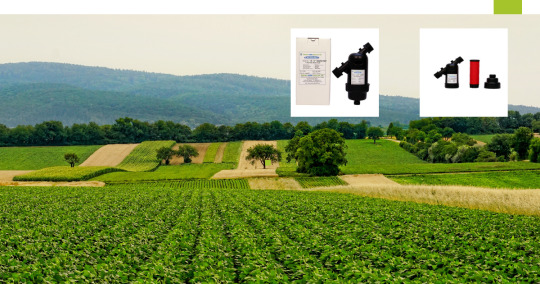
Selecting the right water filter for your farm involves considering factors like the type of irrigation system you use, your water source, and your crops' specific needs. The best filter will ensure smooth system operation without blockages and provide your crops with the clean water they need.
1. Understanding Your Water Source for Optimal Filtration
Knowing your water source is essential in choosing the correct filter, as different sources have varying impurities:
Surface Water (Lakes, Rivers, Canals): Often contains organic debris, algae, and sediments. Disc filters and gravel filters are ideal for handling these impurities.
Groundwater (Wells): Typically contains sand and fine particles. Screen filters and disc filters are effective in removing these contaminants.
Recycled Water: May contain microorganisms and chemical pollutants, requiring a combination of filtration and disinfection systems.
2. Matching Filters to Your Crop Type and Irrigation System
Your choice of filter also depends on your crops and the irrigation system you use:
Drip Irrigation Systems: Prone to clogging, so using disc filters or screen filters is crucial to prevent debris from blocking the system.
Sprinkler Systems: Require clean water; a combination of gravel and disc filters ensures no large particles enter the system.
Micro-Irrigation: Needs high-efficiency filters like the 2-inch PP Disc Filter or 90mm Disc Filter to handle small particles that could clog narrow tubes.
3. Choosing the Best Filtration Type for Your Farm’s Needs
Different types of filters have unique benefits. Here’s a breakdown of the most common types used in agriculture:
Disc Filters: Use grooved discs to trap particles and are effective for filtering organic and inorganic materials. Popular options include the 2-inch PP Disc Filter and the 90mm Disc Filter.
Screen Filters: Use a mesh screen to catch debris. They are easy to clean and ideal for farms using groundwater with minimal debris.
Gravel Filters: Suitable for large-scale operations dealing with heavy debris and sediments. Robust and can handle high-flow systems.
Combination Filters: Some farms may need a mix of disc, screen, and gravel filters for optimal performance, especially with multiple water sources.
Top Water Filters from Leading Manufacturers in Gujarat
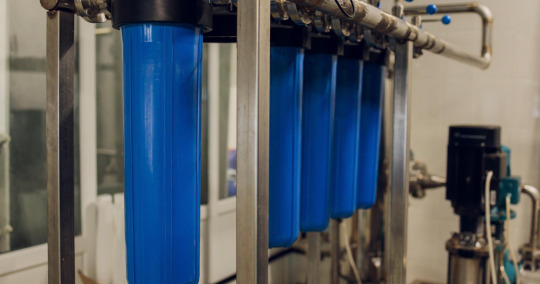
To assist you in making an informed choice, here are some top water filter products that are effective for agriculture in Gujarat:
1. 2 Inch PP Disc Filter: Ideal for Small to Medium Farms
Best for drip or micro-irrigation systems.
Traps fine particles efficiently and can handle high water flow without clogging.
A top choice among Gujarat’s water filter manufacturers due to its durability and effectiveness.
2. 90mm Disc Filter: Perfect for High Flow Irrigation Systems
Suitable for large irrigation systems with high water flow requirements.
Its 90mm size allows it to handle larger water volumes, making it ideal for extensive farming needs.
A popular option among irrigation filter suppliers in Gujarat.
3. PP Screen Filter: Best for Groundwater Filtration
Ideal for farmers using groundwater or well water.
Easy to clean and maintain, effectively removing sand and small particles.
4. Gravel Filters with BW Assembly: For Heavy Debris Management
A robust solution for water sources with significant sediment or debris.
Built to withstand the demands of large-scale farming operations.
5. Drip Irrigation Filters: Specialized for Gujarat’s Irrigation Needs
Designed to handle small particles that can clog drip irrigation systems.
Choose filters tailored to your water source and crop needs for the best results.
Benefits of Choosing a Local Water Filter Supplier in Gujarat
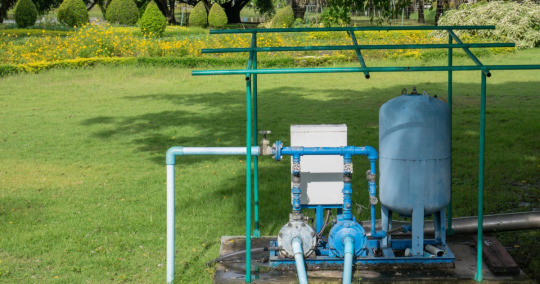
1. Tailored Solutions for Gujarat’s Unique Water Challenges
Local manufacturers understand the region’s specific water challenges, including quality and sediment levels.
They can provide filtration solutions designed for Gujarat’s unique agricultural needs.
2. Quick Access to Products and Support from Local Experts
A local water filter supplier in Gujarat offers faster access to products, parts, and maintenance support, ensuring minimal irrigation system disruptions.
3. Custom Filtration Solutions for Gujarat's Agricultural Sector
Local suppliers can offer customized filtration systems tailored to your farm’s specific needs, ensuring optimal performance and crop health.
Conclusion: Partner with the Right Water Filter Manufacturers in Gujarat
Water is not just a resource in agriculture; it’s the foundation of your farm’s productivity. Investing in the right water filter is essential for maintaining the health of your crops and ensuring efficient water usage.
Whether you need a 2-inch PP Disc Filter, a 90mm Disc Filter, or a more robust solution like Gravel Filters with BW Assembly, partnering with a reputable water filter manufacturers company in Gujarat ensures you have the best filtration technology for your agricultural needs.For those utilizing drip irrigation, understanding the Benefits of Drip Irrigation Systems highlights the importance of having clean, debris-free water. This ensures that your irrigation system operates efficiently, maximizing crop growth and minimizing maintenance issues. With the right filtration system in place, you can focus on what matters most—growing healthy, productive crops and ensuring the long-term success of your farm.
0 notes
Text
Gravel Filters, Media Filters, Manufacturer, Supplier, Sangli, India
#Filter System#Filter Systems#Screen Filter#Screen Filters#Metal Disc Filter#Metal Disc Filters#Gravel Filter#Gravel Filters#Media Filter#Media Filters#Fertilizer Tank#Fertilizer Tanks#Hydrocyclone Filter#Hydrocyclone Filters#Drip Irrigation Filter#Drip Irrigation Filters#Micro Irrigation Filter#Micro Irrigation Filters#Allied Agro Equipment#Allied Agro Equipments#Drip Filter Spare#Drip Filter Spares#Quartz Sand#Quartz Sands#Plastic Screen Filter#Plastic Screen Filters#Micro Irrigation Filter System#Micro Irrigation Filter Systems#Metal Screen Filter#Metal Screen Filters
0 notes
Text
Pond Pumps: Essential Equipment for a Healthy Water Garden
The right pump can help you maximize the space in your garden or outdoors. The circulation of water is essential to encourage beneficial bacteria colonies, and spread heat evenly in hotter weather. Clear Water Pond Pumps circulate fresh, clean water to keep aquatic plants and fish happy and healthy. These pumps are perfect for small fish ponds, water gardens and waterfalls.
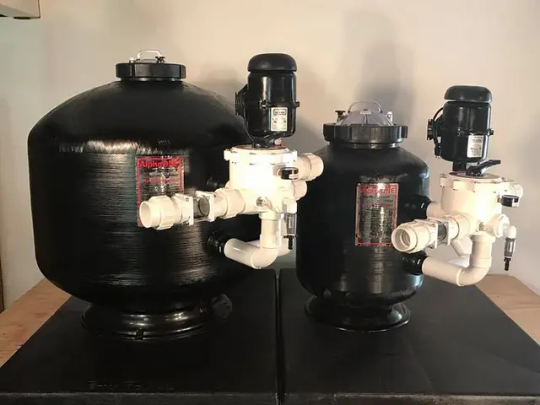
Choose the right air pump for your pond
How to determine the size of a pond for sufficient oxygenation
1. Introduction of the Benefits Air Pumps Provide in Ponds. Air pump deliver oxygen to ponds, ensuring biological filtration is working properly, fish are healthy, and submerged circulation runs smoothly. Air pumps also help reduce accumulations of iron and hydrogen sulfide, as well as volatile organic chemicals.
2. Pond Size and Air Pump Selection Pond size is a key factor in selecting an air pump that will provide enough oxygen for your pond. Calculate the volume of water in gallons by measuring its length, depth and width. Your pump should be able to move this volume within two hours. Diaphragm pumps are able to move water by creating a vacuum when they inflate a flexible diaphragm. They're an efficient solution for fluid handling jobs that require precision.
Energy Efficiency: Centrifugal Micro Pumps feature a fast spinning impeller that is designed to quickly displace large volumes of water. They are perfect for applications such as cooling systems and small-scale irrigation. Their energy efficiency makes them a popular choice for many water applications.
4. Efficient operation with an oil-free Motor: Rocking piston pumps have a durable plastic housing that can withstand the effects of environmental factors. They also feature an efficient motor. Replacement kits are available for worn parts. They can operate continuously up to 30 PSI. Use your rocking piston pumps at 80% maximum pressure to prolong their life and use.
Pond Pumps: How to Choose the Best One
1. Pond Pumps: Their Importance
Finding Efficient Pond Pumps:A pump is the heart of any water feature. It provides oxygen and circulation while running the filter system. There are many factors to consider when choosing a waterfall or pond pump, including power consumption, head pressure and energy consumption.
2. Importance Of Pond Pumps In Water Features:Pond pump are essential components in most water features. They provide a healthy and clean environment for Koi ponds, backyard ponds or water gardens. We have a wide range of pond pump options to suit any size or style water feature. From small decorative pumps, to high-flow waterfall and fountain pumps, our selection is the perfect solution for Koi Ponds, backyard water gardens, or pondless waterfall vaults.
3. Quick, Efficient Pumping Winchell’s clear water submersible pump is an indispensable tool for draining rain barrels, pools and basements. They are the perfect companions for flooding emergencies and overflows. Their compact size, robust construction and ease of transportation make them ideal. They are equipped with an aqua sensor, float switch or both. This allows them to start and stop depending on the water level in rain barrels, basements or pools.

Introduction to Solids Handling pumps
Solids handling pumps are important
1. Introduction Solids Handling pumps: Users cannot choose pure liquids such as water when choosing pumps to transport liquids that contain solids. Such slurries may clog or bind their pumps and cause costly callouts. Users should consider solids-handling pumps to solve this problem. These pumps are used in wastewater, chemical processing, and waste management applications, as well as in mining, agriculture, and agriculture. They prioritize efficiency and reliability when undertaking demanding tasks.
Handling larger bulky solids: To select the optimal solids-handling pump, take into consideration your application and the slurry characteristics. To avoid binding hydraulic surfaces, stringy or fibrous materials may require a chopper with large openings. Larger bulky solids would benefit from a cutter with larger openings. Be aware of the viscosity. Thicker slurries can be more difficult to pump due to their viscosity.
3. Assuring proper operation and functionality:Once a solids handling pump is selected for your application, consider factors such as its flow rate and pressurization. You can measure these values by performing a drawdown test. It is important to regularly inspect your solids handling pumps, including checking for damage and monitoring pressure, flow rate, and other metrics.
Easy installation and space-saving design
Managing Dirt Debris
1. For Ponds and Garden Installations : An extensive range of inline pumps is available to suit a wide variety of applications. These pumps are ideal for heating/air-conditioning, water treatment systems and industrial applications. They offer high flow rates at medium heads. The split-case design allows for maintenance on the impeller to be performed without having to remove the pump from the support structure. These pumps have an inlet on one end of the casings. They use centrifugal forces generated by an impeller, which draws water from a port suction into their casings.
Easy installation and space-saving design: These pumps can also manage dirt and debris effectively, keeping the water clear of particles. The pre-filter cage of these pumps allows for up to a quarter inch of debris to pass without clogging. After being pushed through the filter, this dirt is then returned to a waterfall or stream system. In-line pumps are a more efficient alternative to base-mounted pumps. In-line pumps are easy to install, and they require less space on the floor than their counterparts. They also have greater resistance to impurities within water.

Why choose GC TEK?
GC TEK can be a good choice for finding a solution to suit your needs. GC TEK is the preferred brand for pond enthusiasts and professionals alike. has the products and knowledge to meet all your needs, whether you're looking for a complete pond package or a specialized filter system. Their products are designed to be energy efficient and reduce the environmental impact. Choose GC TEK to build your pond and you can be confident that y
0 notes
Text
The Leading Sewage Treatment Plant Suppliers and RO Plant Providers in Dubai

Dubai's rapid urbanization and industrial growth have increased the demand for efficient water management solutions. The need for reliable sewage treatment plants and reverse osmosis (RO) plants is more critical than ever. This article explores the top suppliers of sewage treatment plants and RO plants in Dubai, highlighting their services and contributions to sustainable water management.
Importance of Sewage Treatment Plants
Sewage treatment plants (STPs) play a vital role in maintaining the health and hygiene of urban environments by treating wastewater from homes, industries, and businesses. Proper sewage treatment:
Prevents Water Pollution: Treats wastewater to remove harmful contaminants before it is released into water bodies.
Protects Public Health: Reduces the spread of diseases caused by untreated sewage.
Recycles Water: Enables the reuse of treated water for irrigation, industrial processes, and other non-potable uses, thus conserving freshwater resources.
Key Features of Modern Sewage Treatment Plants
Primary Treatment: Removes large solids and organic matter through physical processes such as screening and sedimentation.
Secondary Treatment: Employs biological processes to break down dissolved and suspended organic matter.
Tertiary Treatment: Advanced treatment methods to remove remaining contaminants, including nutrients, pathogens, and micro-pollutants.
Energy Efficiency: Utilizes energy-efficient technologies and renewable energy sources to minimize operational costs and environmental impact.
Automation and Control: Incorporates advanced monitoring systems for real-time data analysis and process optimization.
Role of RO Plants in Water Treatment
Reverse osmosis (RO) plants are essential for desalination and purification of water, making it suitable for drinking and industrial use. RO plants:
Remove Salts and Impurities: Use a semi-permeable membrane to filter out salts, minerals, and other impurities from water.
Provide Safe Drinking Water: Essential in areas with limited freshwater resources, such as Dubai, to convert seawater into potable water.
Support Industrial Processes: Provide high-purity water for various industrial applications, reducing the need for chemical treatments.
Top Sewage Treatment Plant Suppliers in Dubai
Metito
Overview: A global leader in water and wastewater treatment, Metito offers comprehensive solutions for sewage treatment.
Specialties: Customized STP designs, sustainable practices, and turnkey project execution.
Veolia Water Technologies
Overview: Renowned for its innovative water and wastewater treatment solutions, Veolia focuses on sustainability and efficiency.
Specialties: Advanced STP technologies, resource recovery, and integrated water management services.
SUEZ Water Technologies & Solutions
Overview: SUEZ provides cutting-edge water treatment solutions, emphasizing eco-friendly technologies and high performance.
Specialties: Comprehensive STP systems, smart water management, and long-term service agreements.
Leading RO Plant Suppliers in Dubai
Aquatech
Overview: A premier provider of advanced RO solutions, Aquatech serves both industrial and municipal sectors.
Specialties: High-efficiency RO plants, zero liquid discharge systems, and water reuse technologies.
Pure Water Technology
Overview: Specializing in water purification, Pure Water Technology offers tailored RO solutions for various applications.
Specialties: Customized RO systems, high-recovery designs, and comprehensive maintenance services.
Culligan Middle East
Overview: Culligan is a trusted name in water treatment, known for its robust RO systems and extensive service network.
Specialties: Residential, commercial, and industrial RO solutions, along with ongoing support and maintenance.
Choosing the Right Supplier
Selecting the right supplier for sewage treatment plants or RO plants involves considering several factors:
Experience and Expertise: Look for suppliers with a proven track record and expertise in the field.
Technology and Innovation: Ensure the supplier uses the latest technologies and innovative solutions to deliver efficient and sustainable results.
Customization and Flexibility: Opt for suppliers who can tailor their solutions to meet specific needs and challenges.
Support and Maintenance: Reliable after-sales support and maintenance services are crucial for long-term operational efficiency.
Conclusion
Dubai's water management needs are met by a range of expert suppliers specializing in sewage treatment plants and RO plants. These suppliers offer advanced, efficient, and sustainable solutions to ensure the safe treatment and reuse of water. By choosing reputable suppliers, businesses and municipalities can achieve significant cost savings, environmental benefits, and enhanced public health outcomes. The leading companies in this field are committed to providing high-quality services and cutting-edge technologies, making Dubai a model for effective water management in the region.
For More info:
Sewage Treatment Plant Suppliers
1 note
·
View note
Link
Check out this listing I just added to my Poshmark closet: Navage Nasal Irrigation System - Saline Nasal Rinse Kit with intact safety seal..
0 notes
Text
Embracing Urban Greenery: Creating Lush Gardens in City Homes

Urban areas may seem like concrete jungles, but opportunities abound for inviting nature's beauty into city living spaces. From petite container gardens to sprawling rooftop oases, creative green spaces nurture wellbeing and connection right at home.
Miniature Gardens
Small-space dwellers can still enjoy gardening's pleasures by cultivating miniature gardens. A bright windowsill or fire escape can host a micro ecosystem of tiny plants like succulents, herbs, and petite annuals. Their scale suits urban constraints while their lively colors and textures spark joy.For indoor micro gardening, mini tabletop greenhouses provide self-contained worlds. Outdoor mini gardens in hypertufa troughs or repurposed containers add living touches to patios and balconies. A mosaic of miniature gardens multiplies the delight.
Vertical Gardens
Maximize vertical real estate by gardening up. Green walls with integrated irrigation systems or modular panels support plants climbing skyward. Customize designs to suit architecture and light exposure.Freestanding vertical gardens are also an option, assembled from stacked wooden crates, hanging pockets, or poles that can stand alone or mount to walls. Choose a mix of trailing vines, flowering climbers, and cascading greenery to animate vertical space.
Community Gardens
Connect with fellow urban gardeners by joining or founding community gardens. Neighbors share plots in vacant lots and public spaces, cultivating fruits and vegetables while building relationships.If space is scarce at home, allotment gardens allow urbanites the space to flex their green thumbs while getting to know the community. Surrounding gardens foster friendships.
Rooftop Gardens
Escape the bustling streets by creating a rooftop refuge. Purpose-built container planters secure soil and plants on flat roofs to craft lush getaways. Water features, cozy seating, and decorative accents transform rooftops into outdoor living rooms.Green roofs with drought-tolerant sedum groundcover offer environmental benefits too, absorbing rainwater, cooling buildings, and filtering air pollution.
Edible Gardens
Fashion chic urban orchards and cutting gardens to enjoy nature's bounty. Dwarf fruit trees thrive in containers while vertical systems maximize planting area. Decorative raised beds provide ample space for snipping fresh herbs and veggies.
0 notes
Text
Embracing Urban Greenery: Creating Lush Gardens in City Homes

Urban areas may seem like concrete jungles, but opportunities abound for inviting nature's beauty into city living spaces. From petite container gardens to sprawling rooftop oases, creative green spaces nurture wellbeing and connection right at home.
Miniature Gardens
Small-space dwellers can still enjoy gardening's pleasures by cultivating miniature gardens. A bright windowsill or fire escape can host a micro ecosystem of tiny plants like succulents, herbs, and petite annuals. Their scale suits urban constraints while their lively colors and textures spark joy.
For indoor micro gardening, mini tabletop greenhouses provide self-contained worlds. Outdoor mini gardens in hypertufa troughs or repurposed containers add living touches to patios and balconies. A mosaic of miniature gardens multiplies the delight.
Vertical Gardens
Maximize vertical real estate by gardening up. Green walls with integrated irrigation systems or modular panels support plants climbing skyward. Customize designs to suit architecture and light exposure.
Freestanding vertical gardens are also an option, assembled from stacked wooden crates, hanging pockets, or poles that can stand alone or mount to walls. Choose a mix of trailing vines, flowering climbers, and cascading greenery to animate vertical space .
Community Gardens
Connect with fellow urban gardeners by joining or founding community gardens. Neighbors share plots in vacant lots and public spaces, cultivating fruits and vegetables while building relationships.
If space is scarce at home, allotment gardens allow urbanites the space to flex their green thumbs while getting to know the community. Surrounding gardens foster friendships.
Rooftop Gardens
Escape the bustling streets by creating a rooftop refuge. Purpose-built container planters secure soil and plants on flat roofs to craft lush getaways. Water features, cozy seating, and decorative accents transform rooftops into outdoor living rooms.
Green roofs with drought-tolerant sedum groundcover offer environmental benefits too, absorbing rainwater, cooling buildings, and filtering air pollution.
Edible Gardens
Fashion chic urban orchards and cutting gardens to enjoy nature's bounty. Dwarf fruit trees thrive in containers while vertical systems maximize planting area. Decorative raised beds provide ample space for snipping fresh herbs and veggies.
Getting hands dirty while nurturing life fuels the soul. Harvesting homegrown produce delivers unmatched flavor and satisfaction.
Cultivating urban gardens, whether miniature in scale or sprawling across rooftops, allows city dwellers to intertwine living landscapes into urbanity. Verdant plants nourish, renew, inspire and connect wherever they take root.
0 notes